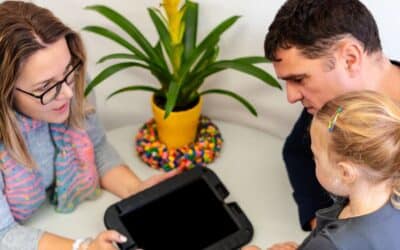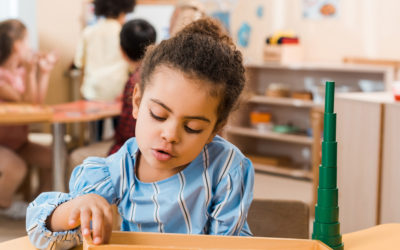There are numerous methods of self care for us and our families, but how do we know which one to choose? For many people, getting active is an excellent choice. In particular, working on fitness, participating in sports, and practicing meditation can be the perfect way to relieve stress and live an overall healthier life. This can be especially true for children on the spectrum and their families. In this post, we’ll talk about the importance of self care and how to practice it using fitness, sports, and meditation.
Fitness
When it comes to general fitness, getting active is key. The great thing is, there’s no wrong way to get active. You may be wondering how or if you’ll be able to squeeze anything in to your family’s busy schedule.
We recommend starting small, and setting aside 20 to 30 minutes throughout your days of the week that are dedicated to getting active. To make the most out of this time, find the activities that will suit your child’s ability level and needs the most. Maybe a walk around the block or at your nearest park is what makes the most sense. Perhaps it’s playing outside or riding bikes. One increasingly common activity is yoga. Yoga is a great way to get exercise that increases strength and flexibility and some studies go as far to say that yoga can reduce repetitive behaviors and self-stimulatory activities in children with autism, especially when used as a complement to proper behavioral treatments like Applied Behavior Analysis (ABA) therapy.
Anything that gets your body moving is fair game. If your child works on their fitness one way, parents don’t have to stick to that alone. They can still hit the gym or do the things they are most comfortable with to practice self care. After all, taking care of yourself is a crucial step for taking care of your child and family. There’s a plethora of options for working on your fitness, and if you’re looking for something a little more structured, maybe sports are a good option for your child.
Sports
Structured environments can be the make or break for your child’s success. Sports are a great way to keep that structure consistent for extracurriculars. Local park districts and school systems tend to be great resources for finding children’s sports leagues. Some will even have leagues and special programming specifically for children with developmental challenges, to make the play fair, engaging, and safe.
When deciding on a sport it’s important to consider the kind of activity each requires. While most sports are team-based, some, like swimming, can be more individual and low-contact. If you’re not sure whether your child would enjoy a particular sport try it at home if possible or talk to the coach/staff people who organize it to get a better feel of whether or not the programming will fit. Despite the sport’s potential complexities, having fun and being active should be the main goals.
Meditation
When you’ve scratched being active off the list, how else can you and your child ensure a holistic lifestyle? Meditation is a popular option for ensuring your mind is being kept healthy along with your body. It can be especially positive for children on the spectrum for a few key reasons:
- Meditation is a break from sensory stimulation. As children on the spectrum find themselves experiencing more and more sensory stimulation, any break they can get is much needed and can be especially useful for reducing anxiety or stress.
- Meditation teaches mindfulness. It is both easy and understandable to get caught up teaching our children on the spectrum basic communication and problem solving skills but not devoting much attention to other soft skills. Mindfulness is one of those traits that can contribute to overall mental health while teaching your child better social and thinking skills. Being mindful is an important thing to master, and the earlier you can practice it, the better.
- Meditation is a time to reflect. Reflection can come at various times during the day but having a scheduled time to reflect can make that all the more meaningful. Teaching your child how to reflect can help them retain information easier while also improving their mood and reducing stress and anxiety.
If you want to try meditation but don’t know where to start, try some guided meditations for kids and decide what works from there. This is also a great self-care technique for parents and other family members.
For more ABA and autism related news and tips visit our blog and follow us on Facebook, Instagram, and Twitter! If you have questions regarding ABA therapy services or you’re interested in visiting one of our locations, don’t hesitate to reach out to us on our contact page. We’re always here to answer your questions and support your family’s needs as best as we can.



